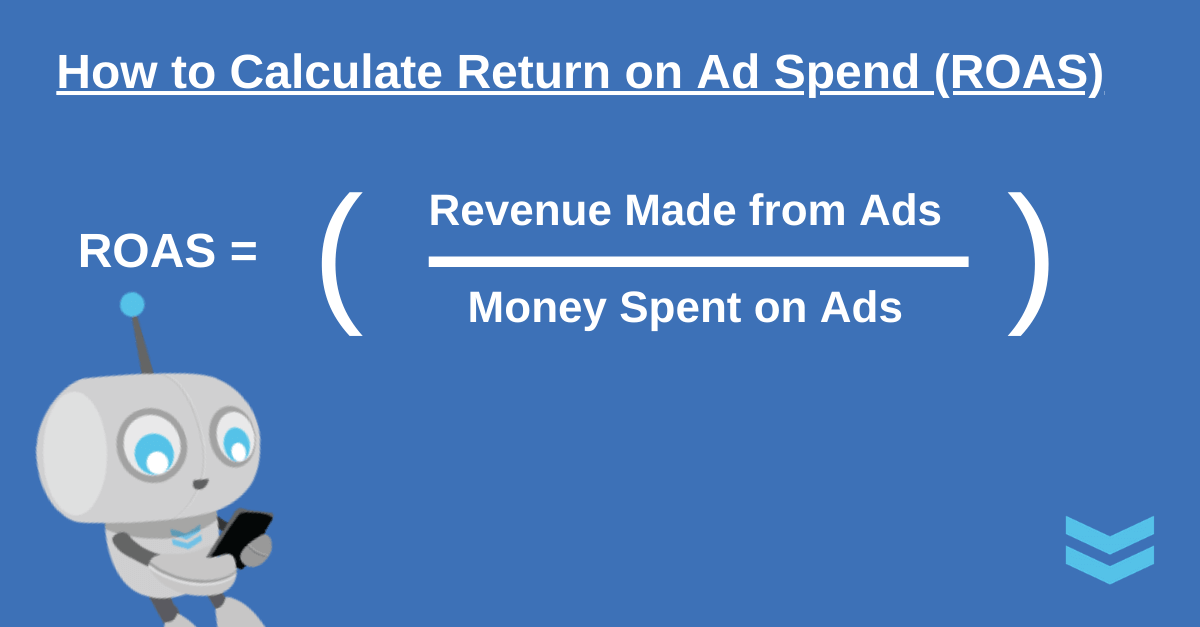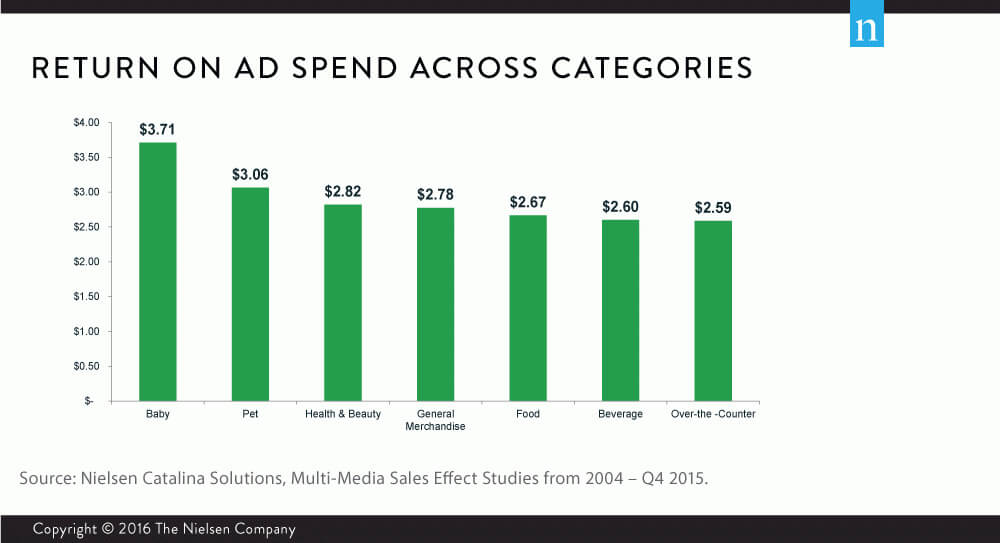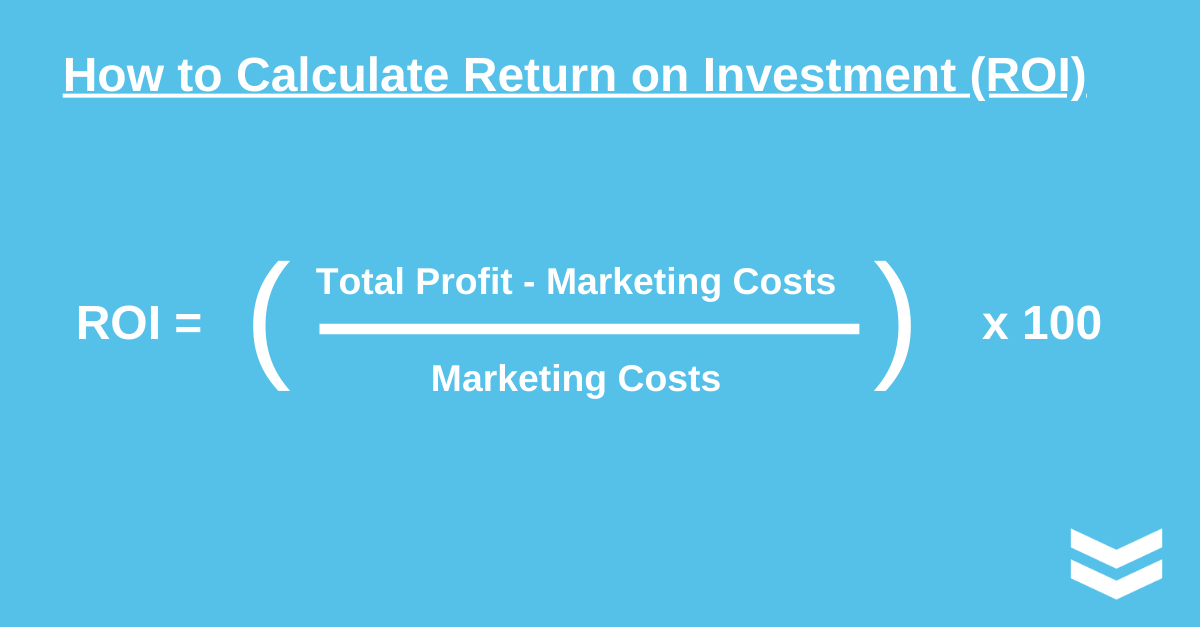As you know, working in marketing, there are many acronyms used in our daily vocabulary.
Editor’s Note: Our Advertising Dictionary is a useful resource for understanding a massive list of other marketing acronyms!
Today we’re taking a closer look at Return on Ad Spend and how it relates to Return on Investment.
Return on Ad Spend is a metric relevant to all industries and vital to understanding ad performance. Let’s get started!
In this article, we’ve covered the following topics:
Photo by John McArthur on Unsplash
Return On Ad Spend (ROAS)
What is Return On Ad Spend?
Whether you run paid advertising in-house or your marketing agency partner runs them on your company’s behalf, we all aim for the same outcome: to drive revenue and growth.
To understand the results and effectiveness of each paid ad campaign we run, we must look at and understand the Return on Ad Spend or also know as ROAS.
The definition of ROAS is:
Advertising campaigns can have different objectives, such as lead generation, brand awareness, or conversions (sales). While increased traffic to your website might be significant, it’s the sales that we want to track and use to assess campaign effectiveness.
Tip: It’s best to track ROAS on paid ad campaigns.
How To Calculate Return On Ad Spend?

The formula is:
(Total Ad Sales) / (Total Ad Spend)
Here’s an example:
Your company ran a $10,000 Google Display Ad campaign last month. From that campaign, you generated a revenue of $45,000. Plugging that into the formula means $45,000 is divided by $10,000, which equals 4.5. That means for every 1 dollar spent on the ad, you made 4.5 dollars.
If you wanted to calculate the percentage of return, multiple that result by 100.
(Total Ad Sales) / (Total Ad Spend) x 100
In this scenario, it would be 4.5 times 100, which ends up being 450%.
This means your Return on Ad Spend was 450%.
If we understand our Return on Ad Spend, that means we can better attribute the ad campaigns we’ve run.
The higher the ROAS is, the better. If a campaign is performing, we want more of that!
What is a Good ROAS?
There is no “right” answer for a “good” Return on Ad Spend as no company is the same.
A 2015 Nielson report (see graph below) reported a 287% average for ROAS across different industries:

However, through our research and industry experience, we would say that a 4:1 ratio of ROAS to be a successful campaign, meaning a $4 revenue to a $1 ad spend.
AdEspresso by Hootsuite notes that a 3:1 ratio is the average to aim for. If it’s any lower, you would need to look at your ad cost and campaign targeting.
Tip: A 300% ROAS is a healthy number, but it would be ideal to aim for 400% or more.
Why is Return on Ad Spend Important?
Return on Ad Spend measures the effectiveness of your advertising campaigns. The higher your ROAS, the better.
The goal of ROAS is to determine whether a specific advertising campaign was profitable or not. It is the metric to check if you want a successful campaign in the future.
By calculating campaign performances’ ROAS, marketers can evaluate which ads had the best conversions, make a note of that, and optimize for future campaigns.
As mentioned earlier, if a digital marketing agency is running your paid advertisements for your company, there will be a management fee. Management fees are part of your ad spend!
The fees would include the strategy, execution and reporting of the ad campaign.
Do note: this doesn’t include creative fees or other additional marketing services. Additional services aside from setting up, running, and reporting on the campaign and their respective fees would count towards your Return On Investment instead (which we will discuss later below).
However, almost 99% of agencies don’t include management fees in their Return on Ad Spend estimates.
Here at War Room, we believe in total transparency. In our reports we provide to our clients, management fees are already included in the calculations, so the results have the final, accurate ROAS. We understand how strict budgets can be, and we want to support our clients with clean data to continue to build better strategies in the future!
It’s essential to get the clean numbers in your report, so as a business, you can attribute each dollar you’ve spent to the results you’ve driven.
Tip: if you do have a marketing agency partner, ask them to incorporate the management fees into the total calculation of ad spend in the reports. This will help you gain a better understanding of your advertising dollars and ad performance in the future.
Photo by Chronis Yan on Unsplash
Return On Investment (ROI)
What is Return On Investment (ROI)?
Return On Investment, also commonly known as its acronym, ROI, is another vital marketing metric similar to ROAS but different.
ROAS is a granular view and measurement of success on a specific ad campaign and only considers advertising costs.
On the other hand, Return On Investment is a broader, holistic view on business health in the marketing department. This metric determines whether a company has managed to generate a good profit margin in terms of what they had invested. This takes into consideration the costs of goods(like eCommerce products), labour (salaries of employees) and time spent, etc.
Your ROI defines your company’s financial situation and ultimately determines if the ROAS was worth it.
Tip: The good way to distinguish the two is that ROI is based on profit, whereas ROAS looks at revenue.
How to Calculate Return On Investment?

It is calculated by the combined total of your profit minus your overall marketing costs, then divided by your overall marketing costs. After that, you multiply that by 100 to get the percentage of your Return On Investment.
So in our previous ROAS example, a $45,000 profit from a $10,000 campaign, if plugged into the formula:
[(45000-10000) / 10000] x 100 = 350%
The ROI would be 350% when the ROAS is 450%.
However, Marketing Costs encompass more than just campaign ad spend. So with that in mind, we can say it took three marketing team members that make 200 dollars a day, three days of work to set up the campaign.
3 x 200 x 3 = 1800
That’s 1800 dollars of salaries paid for this marketing project.
Then an updated calculation would be:
[(45000 – 11800) / 11800 ] x 100 = 281%
This is just an example of how to crunch the numbers and evaluate if the money and resources spent on a marketing project are sustainable.
Tip: The good way to distinguish the two is that ROI is based on profit, whereas ROAS looks at revenue.
Difference Between ROAS and ROI
To sum it all up, we would say that Return On Ad Spend is a metric that marketers should use to improve and optimize for better digital ad performance and results. It’s a tactic that falls under ROI, which is the overarching strategy.
Return On Investment is the metric that defines a company’s financial health and ultimately determines whether the ROAS was worth it.
What Have We Learned?
Return On Ad Spend (ROAS) is a metric that looks at revenue earned from advertising and the money spent on advertising and calculates whether an ad campaign was profitable or not.
To calculate ROAS, use this formula: Revenue Made From Ads / Money Spent On Ads.
A good ROAS by industry average is 3. But 4 is a good, profitable benchmark to aim for.
Return On Investment (ROI) is a metric that measures profit. It looks at a company’s business health holistically and determines if its resources (time, money etc.) are appropriately spent on marketing efforts. This enables big companies to make informed business decisions on a broader scale.
Formula: [(Total Profit – Marketing Costs)/Marketing Costs] x 100
Both metrics are essential for any business to analyze and gauge if an ad campaign performs and if a marketing project and strategy is bringing in the right profit margin for your business.











